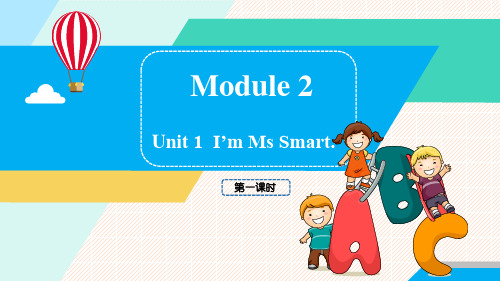unit81 第一课时
- 格式:ppt
- 大小:398.02 KB
- 文档页数:5

U n i t8课时练习(总8页)--本页仅作为文档封面,使用时请直接删除即可----内页可以根据需求调整合适字体及大小--Unit 8第一课时(Section A 1a~2d)一、用所给词的适当形式填空。
(5×3分=15分)1.— __you__ __(have)breakfast yet?—Yes,I have.2.I haven't decided which book __ __ (choose)for English class.3.He finished_ _ _(write)the letter at 10 pm. last night.4.The book is about boys_ __(play)computer games.5.Please go out as__ __(quick)as possible when the earthquake happens.二、根据句意用方框中的词组填空。
(5×3分=15分)think of,go out,full of,grow up,at least6.I hope my life is__ __pleasure.7.—Where did you__ __ —In Shijiazhuang.8.—What do you __the film Where Are We Going,Dad?—It's wonderful.9.I think young people sleep__ __8 hours every day.10.Their parents don't allow them__ __at night.三、根据句意及所给汉语提示,写出句中所缺单词。
(5×3分=15分)11.Lisa wrote her name on the first__ __(页)of the book.12.In this picture,we can see two small__ __(岛).13.She dreamt that she got lots of__ __(珠宝).14.Just now his father__ __(匆忙)to leave the house.15.Oliver Twist and Robinson Crusoe are both __ __ (名著) 四、单项选择。



七年级上英语Unit1课件七年级上英语Unit 1课件下面是小编收集整理的七年级上英语Unit 1课件,希望对您有所帮助!如果你觉得不错的话,欢迎分享!教学目标1.知识与技能通过询问他人名字和电话号码,学习英文姓名、形容词性物主代词和数字0-9,再进行听、说、读、写训练,熟练掌握其句型,从而了解中英文名字的不同表达法以及形容词性物主代词和数词的用法。
2.过程与方法通过读音规则学习单词,再听录音,跟读,发出单词正确读音,并能用升降调大声朗读;通过观察和发现,学习形容词性物主代词和数词的用法,并能用大小写形式书写句子;通过听录音,跟读和对话等形式,学习询问名字和电话号码,并能在同学之间进行英语交流,特别注意中英文名字的不同表达法。
3.情感、态度与价值观自我介绍和问候他人,教会学生如何礼貌地与他人交往;团队合作培养合作精神和交际能力;小组竞赛培养竞争意识和合作精神;学习中英文名字的差异并了解有关欧美国家的`文化。
教学重难点重、难点与关键1. Topic: Making new friends2. Functions: Introduce yourself, Greet people, Ask for and give telephone number3. Structures:Present tense to beWhat questionsPossessive adjectives: my, your, his, her4. Target language:What’s your name? My name is Gina. I’m Gina.Nice to meet you .What’s your phone number? It’s 284-29425. Vocabulary: personal names; numbers; zero, one, two, three, four, five, six, seven, eight, nine, phone number; first name, last name; Hi, Hello6. 正确使用形容词性物主代词:my, your, his, her, its, our, their; 区分:family name, last name, first name 的不同用法;注意这几个缩写词:what is –what’s , I am—I’m, name is –name’s; 认清英语姓氏和名字的排列顺序。


Unit 1 Making friends 教案第一课时(A. Let’s talk & Listen, sing and role -play)1.能听、说、认读单词hello, hi, name, nice, meet, you 等;能运用句Look and say (Pair -work)教师带学生认识其他课本人物,并仿照他们的口吻进行自我介绍,然后同桌结对进行自我介绍练习。
T: Look, can you read these names? S1: Chen Jie ...T: OK. Follow me, Chen Jie...T: If you are Chen Jie, how will you introduce yourself? You can use the sentences “Hi/Hello! I’m/My name’s ... Nice to meet you ...” Now, practice with your partner.S1: Hi! I’m/My name’s ... Nice to meet you ... S2: Hi! I’m/My name’s ... Nice to meet you ...T: Are they good? How many stars can they get? Two or three? Why? S1: Two. No actions but fluent ...Step 3 Consolidation&Extension在学习课文对话的基础上,让学生唱be friends 的歌曲,进一步分析如何be friends 。
Sing and role -play 1. Enjoy a songT: Boys and girls, Do you know how to make friends now? Now let’s enjoy a song. And then tell me how to make friends?2.Let’s think (How to make friends?)(Group work ) T: From the song, we can get some tips to make friends. First, ________ Then, ________Unit 1 Making friendsA. How do we greet friends?Let’s talk&Sing and role-playHi, I’m...Hello, my name’s... Nice to meet you! Nice to meet you too.。
5A Unit 8一、教学要求1、四会单词和词组:Children , a hill ,show, fish, fat, thin2、四会句型: What do you/they have?I/We/You/They have ……What does she/he have?She/He has ……3、三会日常交际用语: We all like our ……Look, …… and …… are coming .Great!4、三会单词和词组 a telescope, a tin-opener , a pot, a stove, a blanket, a towel5、了解字母i在单词中的读音6、会唱歌曲What do you have?二、单元教材分析本单元主要围绕“野营旅行”这个话题展开各项活动。
通过孩子们在营地相互展示各自所带物品的情景,引出一些日常生活用品的词汇。
本单元主要学习句型What do you/they have?I/We/You/They have …… What does she/he have? She/He has ……在本单元中还设计了第六、第七单元中学过的现在进行时,教师在教学中要注意把已经学过的词语或语法和新授内容有机地结合起来。
Unit 8 (第一课时)一、教学内容B Look read and learn &C Look and say二、教学目标1、能正确地听、说、读、写词fish和 What do you/they have?I/We/You/They have ……2、能正确地听、说、读单词a telescope, a tin-opener , a pot, a stove, a blanket,a towel三、教学重点1、能正确地听、说、读、写词fish和 What do you/they have?I/We/You/They have ……2、能正确地听、说、读单词a telescope, a tin-opener , a pot, a stove, a blanket,a towel四、教学难点三会单词的读音五、教学准备1、教具准备1)六个物品卡片及2)玩具电话3)录音机和磁带。
Unit 8 How do you make a banana milk shake?Section A 1 (1a-2d)一、教学目标:1. 语言知识目标:1) 能掌握以下单词: shake, milk shake, blender, turn on, peel, pour, yogurt, honey, watermelon, spoon, pot, add, finally, salt能掌握以下句型:①─How do you make a banana milk shake?─First, peel the bananas…②─How many bananas do we need?─We need three bananas.③─How much yogurt do we need?─We need one cup of yogurt.2) 能了解以下语法:掌握用how much 和how many对事物的数量提问。
3) 学会描述做一些常见食物的过程,并能正确地运用表示顺序的词汇。
2. 情感态度价值观目标:1. 通过制作食物的介绍, 培养学生的实际生活能力, 了解生活知识, 增长生活阅历, 培养实践操作能力和动手能力。
2. 通过食物制作过程的介绍, 让学生认识到劳动成果的来之不易, 使之懂得不能浪费食物, 珍惜他人的劳动成果。
二、教学重难点1. 教学重点:1) 用how much与how many来对数量提问。
2) 动词词组;描述过程的顺序词。
2. 教学难点:能恰当地使用祈使句表达食物的制作过程。
三、学法指导1.学习方法的指导培养学生观察力,记忆力,想象力以及创造能力。
用生动的课件进行听、说、读、写的训练。
2.学习能力的培养通过连贯的听、说、读、写、表演等技能,培养学生的交际能力,发展他们的思维能力。
3.学习策略的指导在课堂教学中把学生分成两人或四人小组的学习小组,让他们围绕着课堂任务相互交流、相互合作,从而获得知识、技能和情感体验,发展学生的自主学习能力。